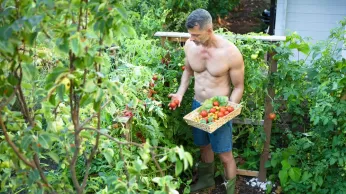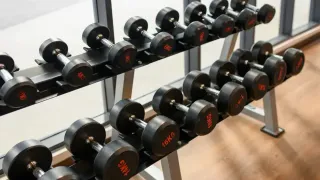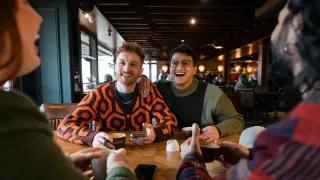
5 hours ago
Queer Joy in Bloom: How LGBTQ+ Folks Are Redefining Hobbies From Beekeeping to Birdwatching
READ TIME: 3 MIN.
Forget the tired trope of all-night clubbing and the relentless swipe culture—2025’s queer revolution is growing in gardens, craft studios, and community greenhouses. There’s a quiet, subversive joy in the rise of hobbies like beekeeping, birdwatching, and knitting among LGBTQ+ folks, and it’s as much about reclaiming space as it is about self-expression. “We’re making our own kind of buzz,” jokes Jamie, a gay beekeeper, as he checks on his backyard hive in Seattle. “It’s radical to nurture something when the world tells you to guard yourself” .
A new generation of queer people is embracing hobbies that might once have been dismissed as “for old people” or “not for us.” Crocheting, gardening, and birdwatching aren’t just trending—they’re blossoming into vibrant, affirming queer spaces. In an era when visibility is both a privilege and a protest, these passions are more than pastimes—they’re acts of self-love and quiet resistance .
There’s a reason queer gardening clubs and knitting circles are thriving on Instagram and TikTok. The pandemic may have sparked a back-to-basics movement, but what’s happening now is deeper: LGBTQ+ people are using “slow hobbies” to find connection, soothe anxiety, and create chosen family. “There’s something magical about seeing a nonbinary knitter teaching a trans teen how to purl at our local library,” says Maya, who co-founded a queer crafting circle in Brooklyn. “It’s not just about making scarves—it’s about weaving community” .
Social media is amplifying this shift. Under hashtags like #QueerGardeners and #StitchNBitch, LGBTQ+ hobbyists are swapping tips, sharing progress pics, and celebrating each other’s tiny victories—whether that’s a first tomato harvest or a newly finished beanie. “It’s a way to unplug from the noise and reconnect with ourselves,” Maya adds. “For a lot of us, these spaces are the first places we’ve felt truly safe to be ourselves—no performance, no pretense, just joy” .
There’s a deeper, sometimes political, resonance to these hobbies. For many LGBTQ+ people, participation in activities like gardening or nature walks was historically fraught with exclusion or coded expectations. “Growing up, the garden was my mom’s domain, and I was always told to ‘man up’ and play sports,” recalls Alex, a nonbinary birder from Melbourne. “Now, my queer birdwatching group is the most supportive space I’ve ever known” .
Community gardens and crafting circles aren’t just about plants and yarn—they’re about building new traditions, healing old wounds, and asserting queer presence in public life. In Sydney, LGBTQ+ gardening collectives have started to pop up in community parks, intentionally welcoming people of all genders and sexualities. Their monthly “Plant Swaps” are less about competition and more about nurturing: “It’s radical softness in action,” says local organizer Finn. “We’re showing up for each other, and for the earth” .
What’s striking about this movement is its emotional resonance. In a world that often demands resilience from LGBTQ+ people, these hobbies are invitations to tenderness, creativity, and rest. Knitting a scarf or tending a garden plot might seem simple, but for many, it’s transformative. “Every time I finish a hat, I think: my hands made this,” shares Leo, a trans man who picked up crocheting during lockdown. “It’s proof that I can create, not just survive” .
These acts of creation are also acts of defiance. In 2025, as queer people face both new challenges and unprecedented visibility, hobbies like beekeeping or birdwatching become sanctuaries—places where identity is celebrated, not policed. “It’s about queer joy, not just queer struggle,” Leo says. “We get to be messy, silly, and soft. That’s powerful.”
So, where do you start if you want to join the movement? The beauty is, you don’t need fancy gear or prior experience—just curiosity and a willingness to connect. Here’s how queer folks are making these hobbies their own:
- Find Your People: Look for local LGBTQ+ gardening, crafting, or birdwatching groups online, or start your own with friends .
- Share Your Journey: Post your progress on Instagram or TikTok using queer hobby hashtags to find community and inspiration .
- Support Queer Creators: Many queer hobbyists share tutorials, zines, and patterns—support them by buying their work or boosting their profiles .
- Challenge the Norms: Don’t be afraid to make your hobby as queer as you are—knit rainbow socks, grow a pride flag flower bed, or host a drag-infused garden party .
As the year unfolds, the message is clear: whether you’re a gay beekeeper, a lesbian birder, or a nonbinary knitter, your joy is both personal and political. In a world that too often demands our hardship, these hobbies are a celebration—a reminder that queer life contains endless possibilities for beauty, rest, and connection.
So here’s to the queer gardeners, the stitchers, the bakers, the dancers, and every LGBTQ+ person finding new ways to bloom. Your joy is revolutionary—may it continue to grow, one seed, stitch, and songbird at a time.






